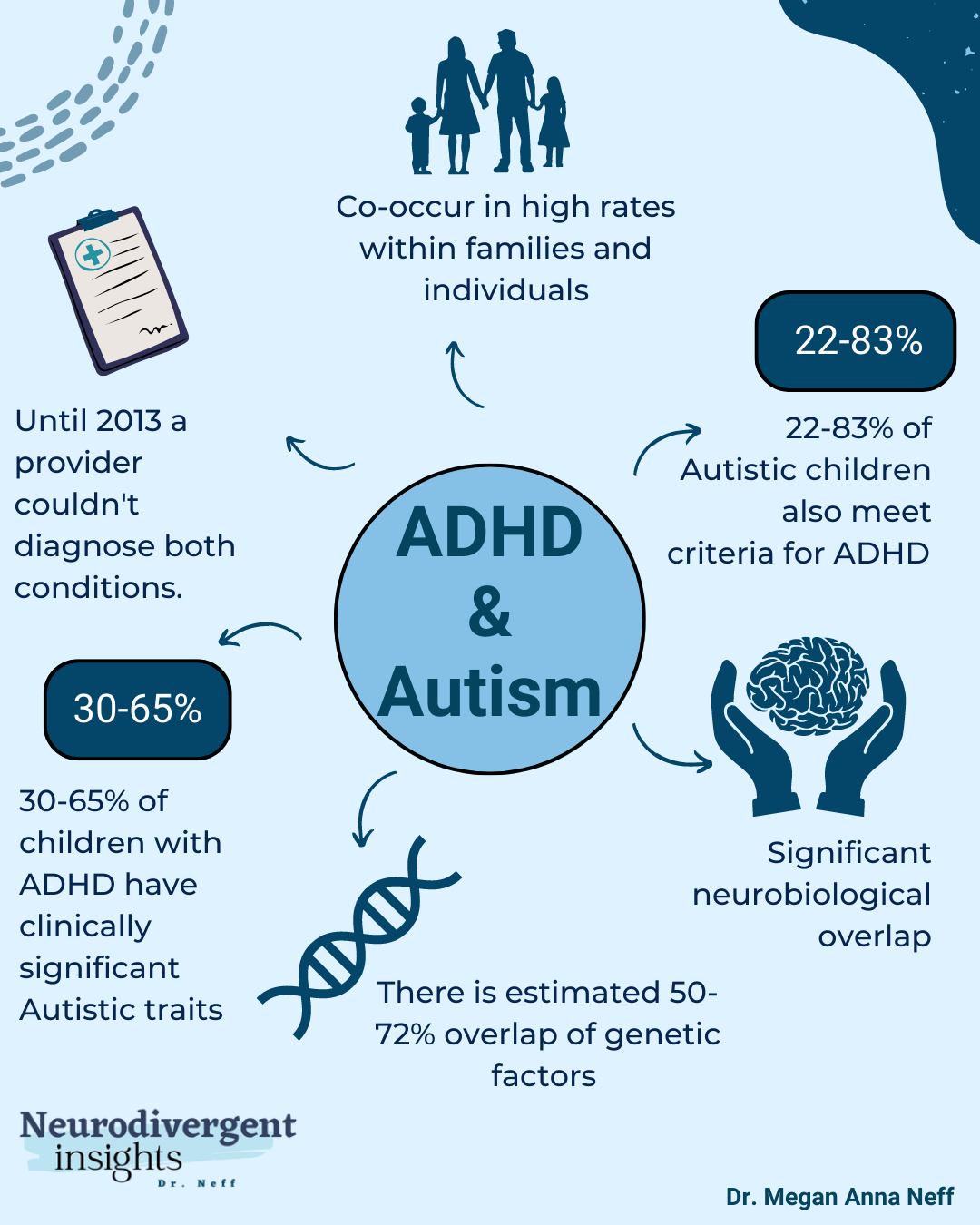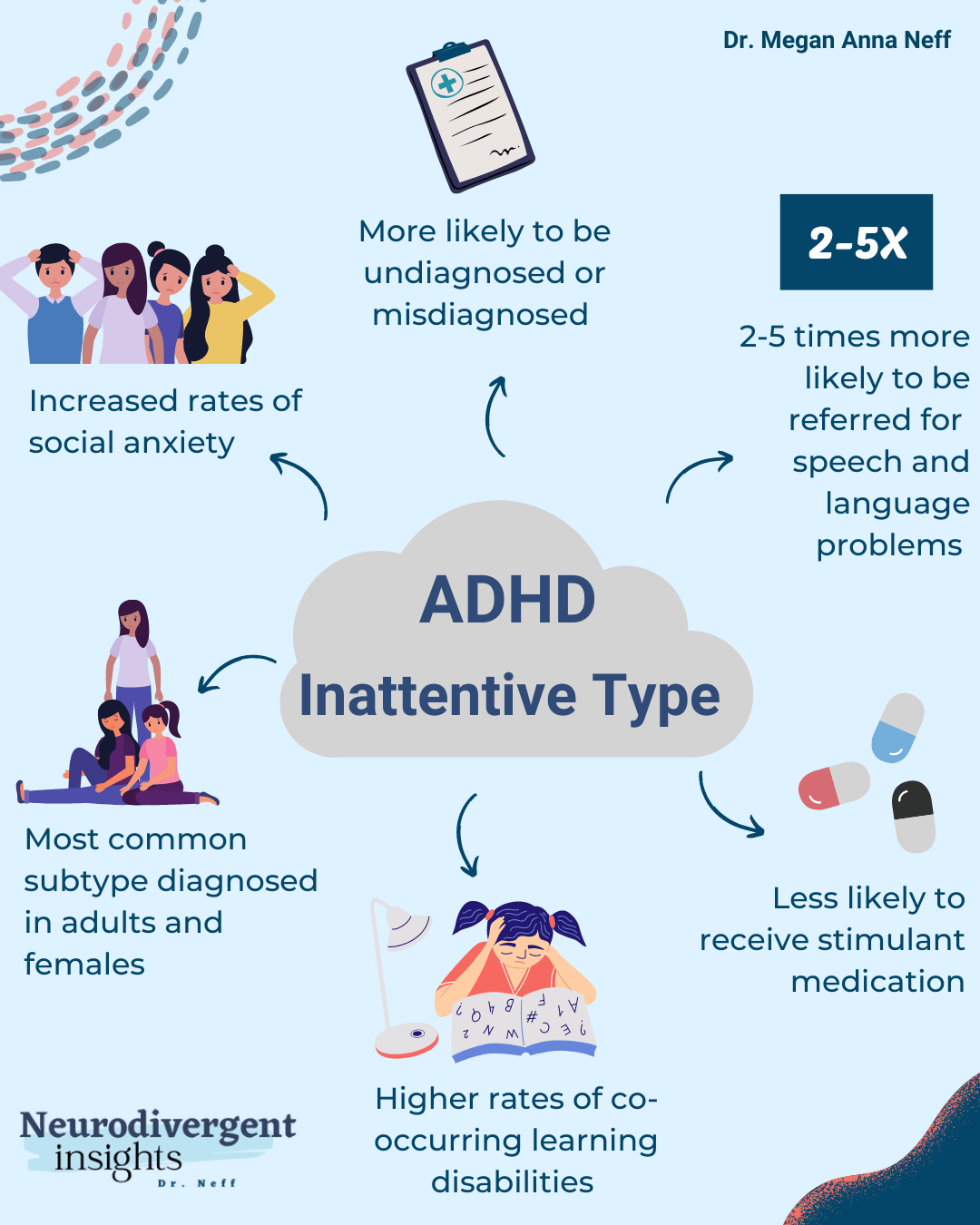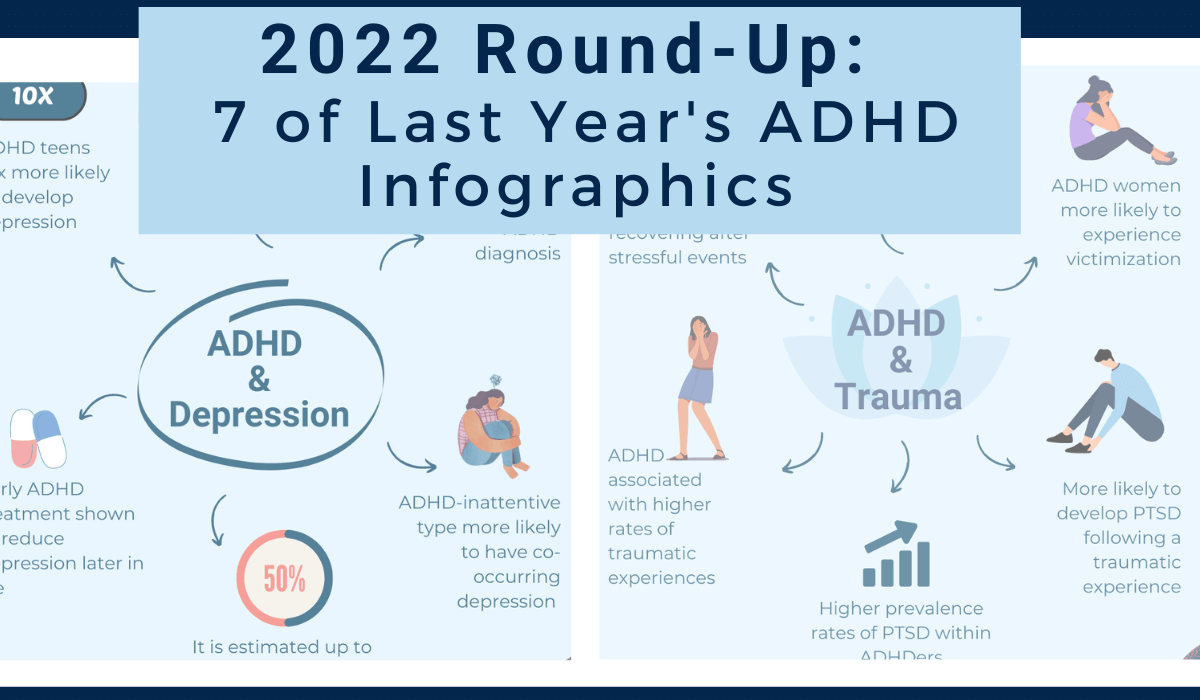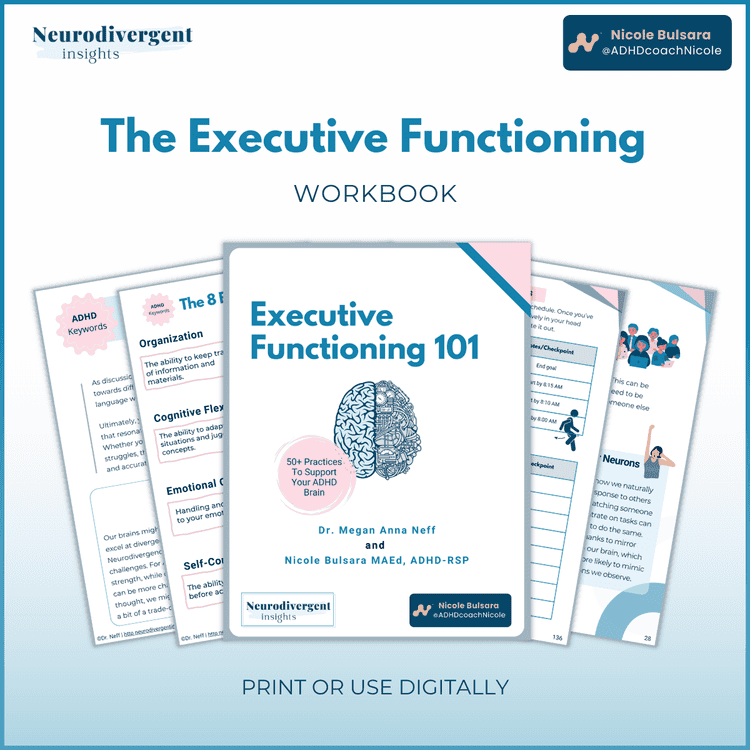The 7 ADHD Infographics of 2022
Like many late-in-life diagnosed neurodivergent people, the topic of neurodiversity became a passionate interest. As a Psychologist, I was struck by how little my training had prepared me to understand the complexity of ADHD. I became really interested in learning more about the different ways that ADHD presents itself, including the different subtypes, complex ADHD, and how it can present in different groups of people (women, BIPOC, and genderqueer people). I began to do research and create these ADHD infographics as a way to help me sort through all the ADHD data!
My brain is highly visual and I do best when I can visualize information and data into a cohesive image, so naturally, creating infographics was an intuitive way for me to capture a pattern of data. Visualized data tells a story. And there are many untold stories when it comes to ADHD. I am so pleased that people have continued to find these infographics a helpful resource.
Whenever I create infographics, you can find a mini literature review that goes with them where you’ll find links to the original research studies. All research studies are imperfect, and thus, all infographics are imperfect. However, I still find them to be helpful tools for capturing the underlying story. You can find my full library of ADHD infographics here. I’ve polished up some of my most popular Autism Infographics from 2022 and compiled them in one place for you all. Enjoy!
ADHD and Autism: How ADHD and Autism are Related

This ADHD infographic provides an overview of the overlap between ADHD and autism. It’s been a big year for exploring the connection between ADHD and autism, and for good reason. A lot of people with ADHD also have autism or exhibit autistic traits and vice versa. It’s also common for families to be made up of both ADHDers and Autistic people.
You may be thinking, “Why are we just now figuring this out?” Well, up until 2013, you co
uldn’t be diagnosed with both ADHD and autism at the same time. People used to think you were either ADHD or autistic, not both.
But now, we’re making up for the lost time. If you’d like to read the research that goes with this infographic, you can find it here. You can also find my ADHD vs. Autism Venn diagram here, which covers similar topics.

Inattentive ADHD is one of the toughest presentations to spot. And many people with this subtype go undiagnosed at high rates (particularly women). This ADHD infographic dives into some of the experiences of people with ADHD-inattentive type.
People with ADHD-inattentive type are often thought of as just being “scatterbrained, uninterested, or even anxious or depressed”. But the truth is, they’re often underdiagnosed and undermedicated compared to other types of ADHD.
A study by Willcutt, in 2012 found that even though Inattentive ADHD is the most common subtype, it’s often overlooked and those with this type may need to advocate for themselves to get the support they need. You can find a rundown of the numbers and mini literature review in the original blog post here.
ADHD and Tourette’s Syndrome

Tourette Syndrome (TS) and Attention-Deficit/Hyperactivity Disorder (ADHD) frequently co-occur and have similar neurological features. When both conditions are present, they tend to amplify the symptoms of each other, thereby requiring additional support and treatment.
Studies show that ADHD symptoms are reported in 35-90% of children with TS (Oluwabusi et al., 2016). In addition, ADHD is the most commonly co-occurring condition with TS (Oluwabusi et al., 2016). It is estimated that 1 in 5, or 20% of ADHD children will develop a chronic tic disorder (Bloch, 2009), and over half of children with TS are also diagnosed with ADHD (Freeman, 2007). To read more and for links to the original research see the original infographic and blog post here.

ADHD and Borderline Personality Disorder (BPD) have a high co-occurrence rate, with one diagnosis often masking the other. Studies have shown that individuals with ADHD have a significantly higher likelihood of also having BPD compared to the general population. In a population sample, 33.7% of ADHDers were found to have a lifetime prevalence of BPD, and in a large-scale population study in Sweden, ADHDers had 19.4 times higher odds of BPD diagnosis.
Longitudinal studies have also shown that children diagnosed with ADHD in childhood have a higher likelihood of being diagnosed with BPD in adulthood. Women with ADHD, particularly those with combined type, are more likely to have BPD than men with ADHD, who are more likely to be diagnosed with an antisocial personality disorder. To read more and for links to the original research see the original infographic and blog post here.
ADHD and Depression

If you’re familiar with ADHD and depression, you know that these two conditions often go hand in hand. Studies have shown that a lot of people with ADHD also struggle with depression and vice versa. And, if you have ADHD and haven’t received treatment or have been diagnosed late in life, your risk of developing depression only increases. This can be due to a combination of genetic and environmental factors, such as facing rejection, difficulties in school and at work, and more. To learn more about these statistics and for links to the original research studies, see the original blog post here.
ADHD and Sleep

- restless leg syndrome
parasomnias
insomnia
narcolepsy
delayed melatonin disruption
circadian rhythm dysregulation.
Complicating matters, sleep issues can further make executive functioning, inattention, and hyperactivity worse!
You can see the original ADHD and Sleep infographic and research review here. Sleep is a mini special interest of mine, so I did a whole series on sleep. This is my deep-dive blog post into all things neurodivergent sleep, and I also made a workbook this year for neurodivergent people struggling with sleep.

ADHD and Trauma

Similar to Autism and Trauma, there is a significant overlap between ADHD and trauma. This can also lead to misdiagnosis (of both!), complicating matters. I once heard it said that ADHD is both under and over-diagnosed, which feels accurate to me. Sometimes trauma and complex PTSD is misdiagnosed as ADHD. Other times ADHD is dismissed, and the person is diagnosed with PTSD. It’s messy, to say the least!
When a person has both, it exacerbates PTSD symptoms of makes ADHD more difficult to cope with. Newer research is looking into how to support ADHDers with PTSD. However, we need a lot more research in this area!
You can find the original infographic here, along with the literature review. You can also find my ADHD vs. PTSD Venn diagram here and the misdiagnosis Monday e-book on the topic here.
And That’s a Wrap on 2022 ADHD Infographics!
Thanks for checking out my ADHD infographics from 2022.
This post was proofread by Grammarly, my go-to for proofreading and catching all the details I naturally miss! Grammarly is entirely free to use. Click here to give it a try.









